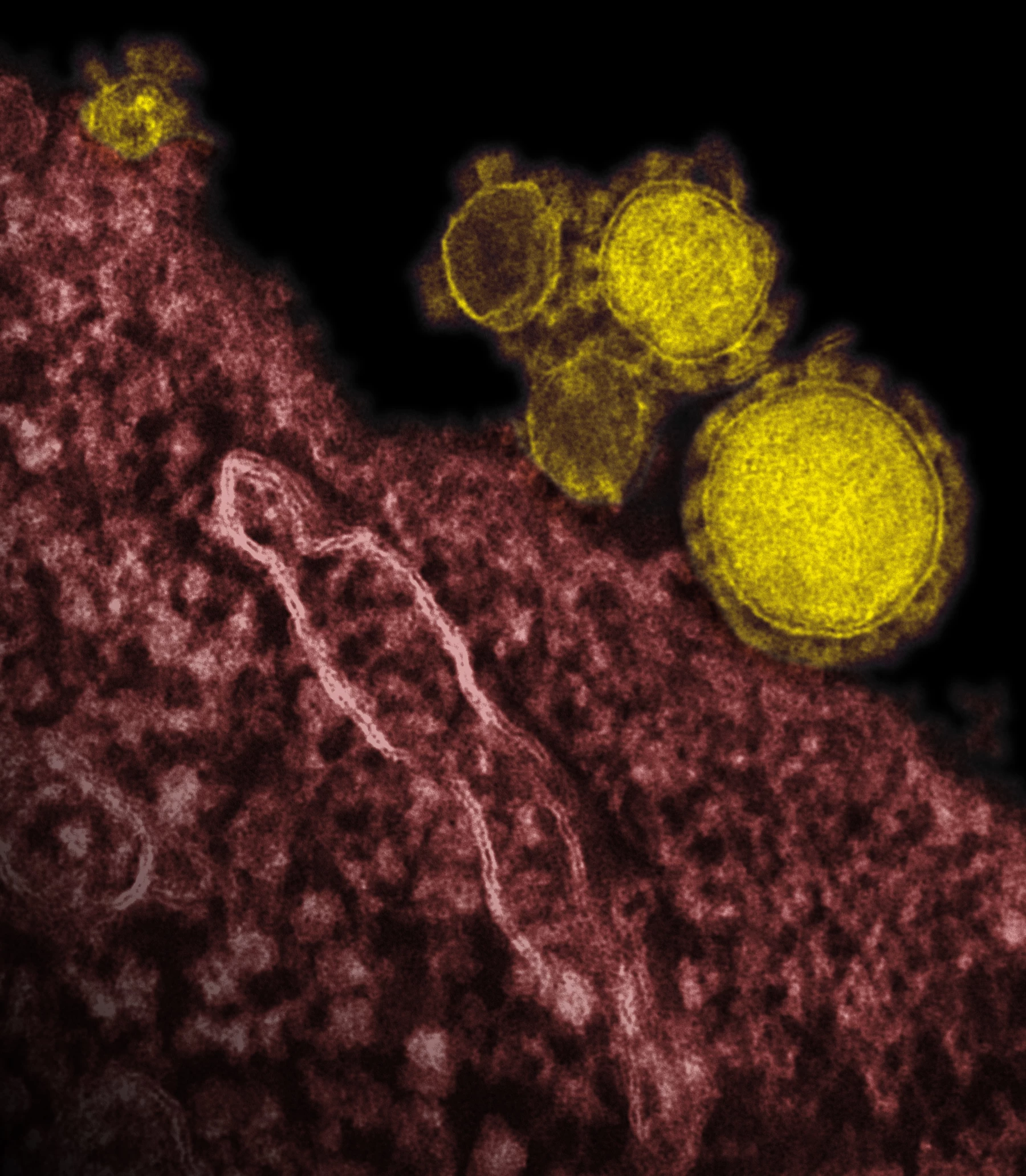A laboratory in the United States has produced the most detailed images to date of the novel coronavirus currently spreading across the globe. The digitally colorized images illustrate the crown-like appearance of the virus, now officially named SARS-CoV-2 due to its similarity to the 2002 SARS virus.
The new images were produced by a team at the National Institute of Allergy and Infectious Diseases' (NIAID's) Rocky Mountain Laboratories (RML) in Hamilton, Montana, who say the virus is notably similar in appearance to both the MERS and SARS viruses.
The images highlight the spikes covering the virus, an iconic feature of coronaviruses that led to its virus family name, corona being Latin for "crown." The images have been digitally colored in order to help visually separate the virus from surrounding cells and illustrate how the virus replicates and emerges from the surface of cells.

While the disease caused by the virus has been named Covid-19, the virus itself received a different title late last week when the International Committee of Taxonomy of Viruses named the pathogen SARS-CoV-2. The naming of the virus recognizes its similarity to the SARS virus, calling it a "sister to severe acute respiratory syndrome coronaviruses (SARS-CoVs)."
There has been confusion over the past week due to the virus and disease being given different names, unlike the recent SARS and MERS scenarios where the virus and disease were dubbed with similar titles. Some scientists have expressed frustration over the naming confusion, particularly with the new virus's name essentially being titled SARS version 2.

Mike Osterholm, from the University of Minnesota, suggests the virus name is confusing as the Covid-19 disease is very distinct from the SARS disease.
“Our hope is there is a reconsideration of the virus and disease naming and another effort made to reconcile the two, so they are more similar and more descriptive of what this virus is doing to humans and how it fits into coronavirus virology,” Osterholm said last week to Science Magazine.
As of February 17, there have been almost 70,000 confirmed cases and 1,670 deaths of Covid-19. The vast majority of cases are still confined to China, however, the very first confirmed case in Africa was recently reported in Egypt.
Source: NIAID












